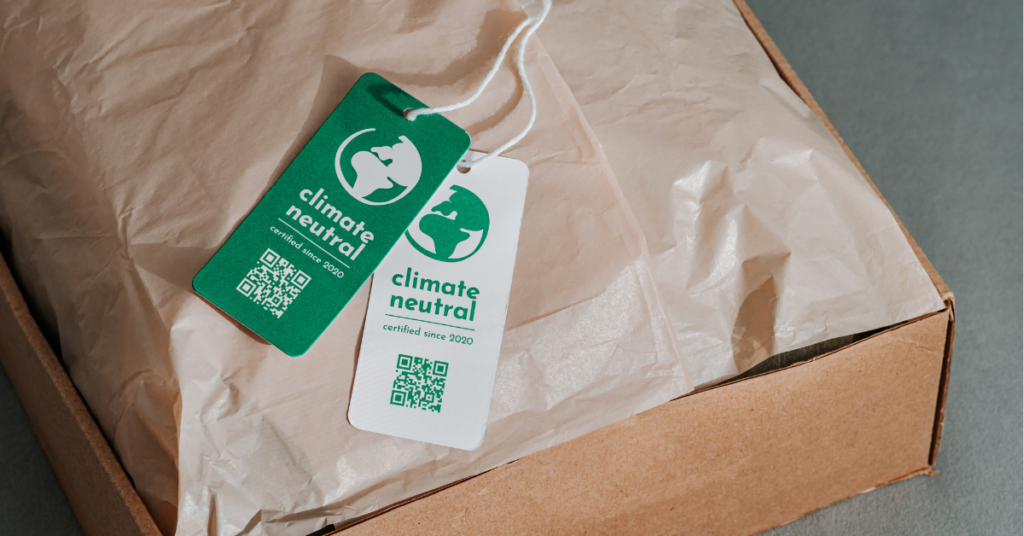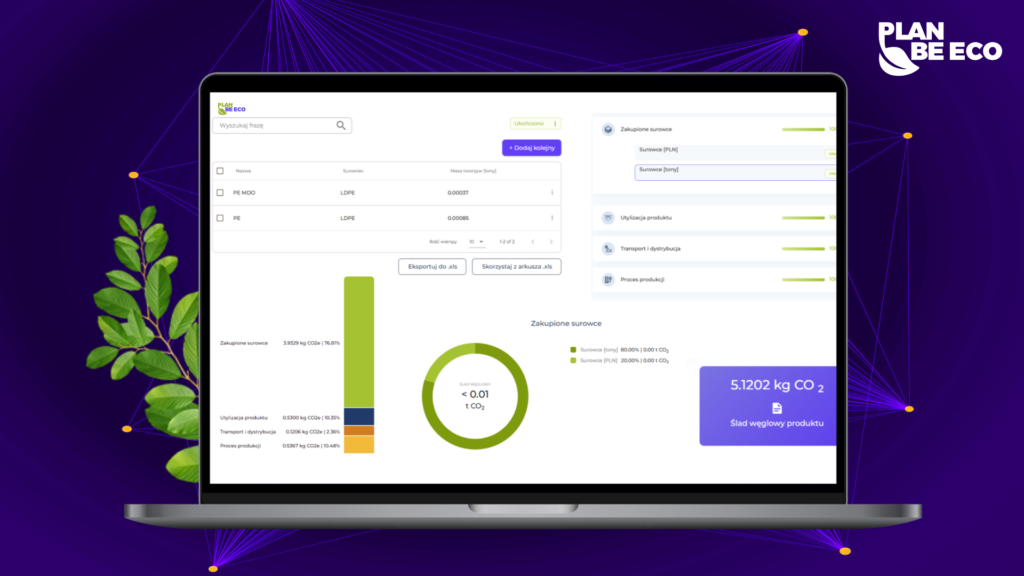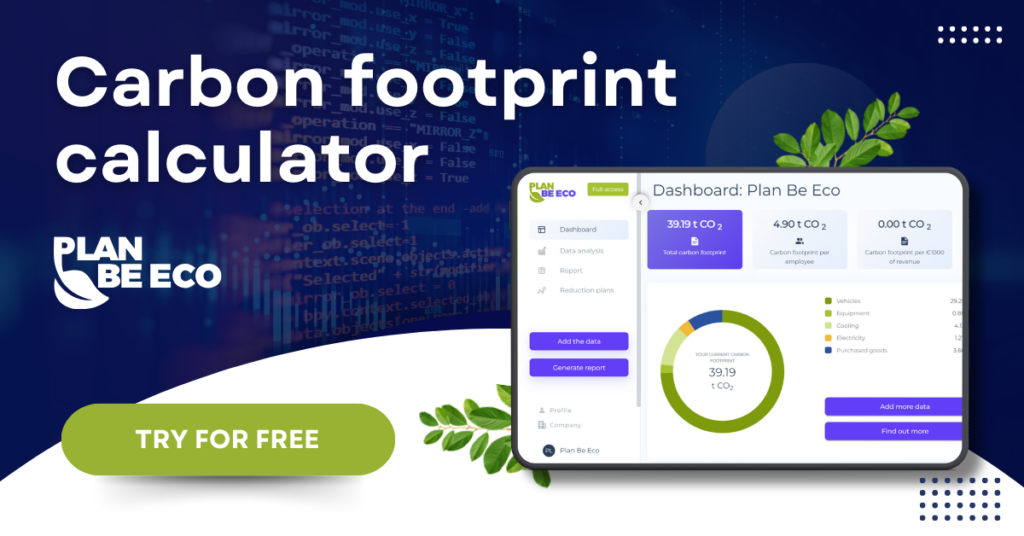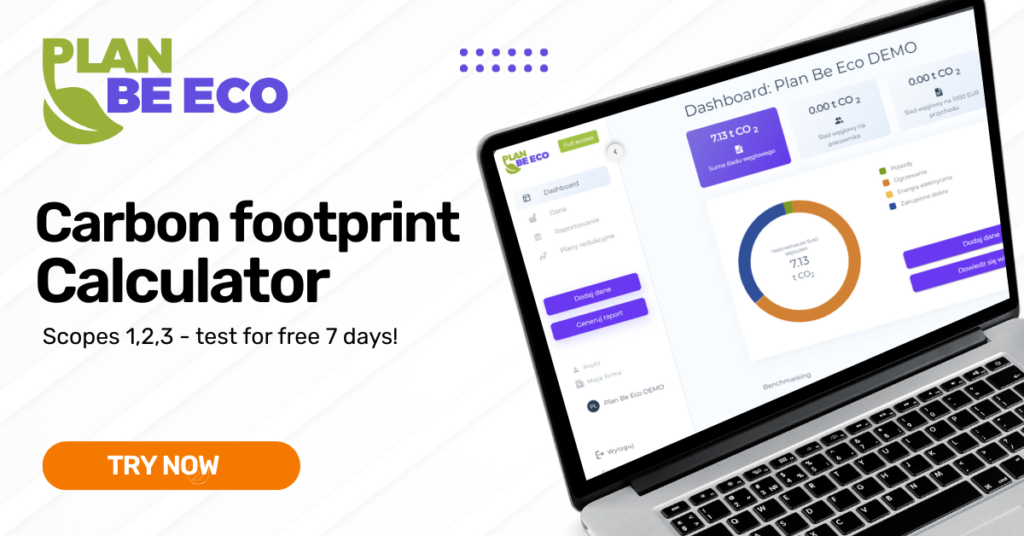Product carbon footprint: definition and significance

Table of content
In terms of sustainability, the topic of the carbon footprint is gaining importance. It encompasses emissions that arise not only in factories, but also at external suppliers, during business trips and when the product is used by the end user. Considering the entire life of a product makes it possible to identify the largest share of emissions and manage them effectively.
What is the product carbon footprint?
What is a carbon footprint? It is the total amount of greenhouse gases emitted, including both direct and indirect emissions, from a specific activity or product. Therefore, a product’s carbon footprint is one of the key aspects of its environmental impact throughout its life cycle, from raw material extraction to end-of-life disposal.
It is a measure of the total amount of greenhouse gases (GHGs) emitted throughout a product’s life cycle, including raw material extraction, production, electricity purchase, transport, use, and disposal.
It is calculated according to the principles of life cycle assessment (LCA), following the guidelines of standards such as ISO 14067 and the Greenhouse Gas Protocol. The result is usually expressed in carbon dioxide equivalent (CO₂e).
What is a life cycle analysis (LCA)?
LCA is an internationally recognised method for assessing the environmental impact of a product at all stages of its life, from raw material extraction and manufacturing to distribution, use and disposal or recycling. In the context of a product’s carbon footprint, LCA enables the total amount of greenhouse gases emitted during the product’s entire life cycle (from cradle to grave) to be identified and estimated.
The method considers both direct and indirect emissions, such as those related to the purchase of electricity, the use of external suppliers, and the extraction of raw materials. Life Cycle Assessment (LCA) is the basis for calculating the carbon footprint in accordance with ISO 14040/14044 and ISO 14067, and is a key step in achieving climate neutrality and sustainability.
LCA enables companies to reduce the carbon footprint of their products and make strategic decisions that align with corporate sustainability principles and the European Union’s corporate due diligence regulations.
Find out the significance of calculating carbon and water footprints in the fashion industry
How do you calculate a product's carbon footprint?
In order to calculate a product’s carbon footprint, it is necessary to apply the LCA methodology and comply with the Greenhouse Gas Protocol. The process of calculating the carbon footprint includes an analysis of all stages – from raw material extraction to energy consumption in production and disposal.
At the organisational level, the corporate carbon footprint covers three scopes:
- Scope 1: direct emissions, i.e. the burning of fuels in production facilities,
- Scope 2: emissions related to the purchase of electricity,
- Scope 3: indirect emissions – including from the entire supply chain, transport, materials, as well as business travel and waste emissions.
A product’s carbon footprint usually takes Scope 3 emissions into account to a large extent, because they account for the impact of the entire supply chain and use.
Why is it important to know your carbon footprint?
Companies measure the carbon footprint to identify the most carbon-intensive production steps and optimise processes (e.g. by replacing raw materials or processes with less carbon-intensive ones). This measurement is also a response to increasing climate and regulatory requirements – the EU increasingly requires reporting of GHG emissions (scopes 1-3) and activities.
Additionally, transparency on emissions builds competitive advantage and a better brand image. Companies that publish the carbon footprint of their products signal their climate commitment to customers, which gains recognition from informed consumers
For companies, calculating a carbon footprint is not only about compliance, but also part of corporate sustainability. It allows them to reduce their carbon footprint by taking measures such as switching to renewable energy sources, reducing plastic consumption or improving production efficiency. It is also a key step towards achieving climate neutrality.
Product carbon footprint vs organisational carbon footprint – what’s the difference? [read here].

Are there laws or regulations on reporting the carbon footprint of products?
In the near future, all companies in the European Union will be subject to non-financial reporting obligations under the Corporate Sustainability Reporting Directive (CSRD). These regulations require the knowledge and reporting of greenhouse gas emissions. At the same time, the draft Corporate Human Rights and Environmental Due Diligence Directive (CSDD) requires companies to analyse climate risks throughout their supply chains.
At the EU level, Regulation (EU) 2023/1542, for example, has introduced a requirement for a carbon footprint declaration for batteries and accumulators. Furthermore, the CSRD obliges large companies to report their emissions (scopes 1–3), which de facto also includes data on products in the supply chain.
Additionally, uniform assessment methods (e.g. the Product Environmental Footprint, or PEF) and voluntary labelling of the carbon footprint of products are being developed and may become standard in the coming years.
What do consumers think about the carbon footprint?
Consumers are increasingly paying attention to information about a product’s carbon footprint. Transparent data on a company’s emissions and efforts to reduce them influence purchasing choices. Products with similar features but lower climate impact can gain an advantage in the market.
According to Carbon Trust research, 67% of consumers say they are more likely to choose a brand that clearly communicates the size of its carbon footprint. This shows that calculating and presenting data on the total amount of greenhouse gases associated with a product builds competitive advantage.
Research shows that carbon footprint labelling increases environmental awareness and encourages the choice of products with lower emissions. For example, an experiment conducted by the Norwegian shop Oda showed that attaching emissions information to receipts for purchased products increased demand for fruit and vegetables by 50% and for plant-based alternatives to meat by 80%. Similarly, researchers in Copenhagen find that climate labelling prompts many people to reach for more environmentally friendly products.
How to calculate the carbon footprint of cardboard packaging – a practical guide for businesses

Which companies share information on the carbon footprint of their products?
More and more companies are publishing emissions data for their products. Examples include oat drink producer Oatly, meat alternatives manufacturer Quorn, restaurant chain Just Salad, as well as technology and lifestyle companies such as Logitech, Allbirds and cosmetics company Cocokind. These companies include carbon footprint information on packaging or promotional materials, which helps customers make informed purchasing choices and motivates companies to further reduce emissions.
Examples and benefits
- Apple: Reduction in company and product carbon footprint – the new iPhone 16 Pro Max emits 30% less CO₂e than its predecessor. Reduction achieved through, among other things, renewable energy sources in the supply chain.
- Allbirds: the company includes information on the carbon footprint of the product on the labels of each product. This averages 7.12 kg CO₂e per pair of shoes. The “Moonshot” shoe has emissions of even less than 2 kg CO₂e.
- Siemens: through LCA analysis and digital simulations, one plant in Sweden managed to reduce its carbon footprint by 72% and waste by 90%.
According to BCG, companies that systematically calculate the carbon footprint of their products are 4 times more likely to achieve financial savings, and 25% of them have reported profits in excess of USD 200 million per year.

Check out the Plan Be Eco product carbon footprint calculator
Plan Be Eco offers an advanced CO₂ emissions calculator to accurately calculate the carbon footprint of products based on Life Cycle Assessment (LCA) methodologies and Environmental Product Declaration (EPD) standards.
The tool is available to companies in a wide range of industries, allowing them to take into account the specifics of their business and adjust indicators and units to obtain the most accurate results. This enables companies to effectively identify the areas with the greatest impact on greenhouse gas emissions and take action on sustainability.

The Plan Be Eco calculator also supports compliance with regulatory requirements, such as the CSRD, by enabling emissions reporting in three scopes in accordance with the GHG protocol and the ISO 14064-1 standard.
Summary
Today, the carbon footprint of an organisation and its products is not only an indicator of climate impact, but also a valuable tool for managing operational efficiency, regulatory risk, and reputation. Calculating a product’s carbon footprint enables a company to understand where greenhouse gas emissions are generated in its processes, how to reduce them and how to align operations with sustainability and consumer expectations.
Companies that are already taking action in this area are building regulatory resilience in the face of upcoming obligations, such as non-financial reporting under the Corporate Sustainability Reporting Directive (CSRD), as well as gaining a competitive advantage and strengthening their market position — to the benefit of both the climate and their own bottom line.
If your company wants to start its journey towards climate neutrality in a considered and professional manner, benefit from the expertise of the Plan Be Eco team. Our experts specialise in calculating the carbon footprint of companies, products and events, as well as creating decarbonisation strategies tailored to your industry and supply chain.
Sources:
- https://www.ekomeritum.pl/slad-weglowy/
- https://www.multicert.pl/certyfikacja-i-badania/certyfikacja-systemow/iso-14067
- https://climateandstrategy.com/slad-weglowy/
- https://foodfakty.pl/informacja-o-sladzie-weglowym-produktow-na-etykietach-zywnosci-wplywa-na-zachowania-konsumentow
- https://whowillsavetheplanet.pl/2022/02/20/jak-informacja-o-sladzie-weglowym-na-produkcie-zmienia-decyzje-klientow
- https://www.ce-polska.pl/deklaracja-dotyczaca-sladu-weglowego

